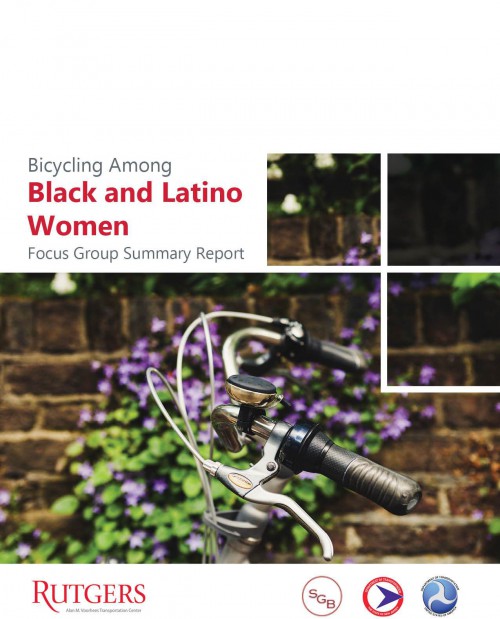This study examines the factors that influence women’s transportation mode choice as well as their perceptions of bicyclists and bicycling. In addition, input was collected on the types of strategies and improvements that might induce women to consider bicycling more for transportation or recreational purposes.
According to the US Census, women consistently bicycle less than men and this gender gap has increased over the last decade. Considering this as an emerging issue, the New Jersey Bicycle & Pedestrian Resource Center held four focus groups that provided information about the indicators that might discourage women from biking amongst three different ethnic groups: Black, Latino and White women. Focus group discussions explored a variety of topics including participants’ transportation choices, responsibilities, perceptions of safety and bicycling experiences. Overwhelmingly respondents noted safety and their role as a transportation provider as barriers to bicycling. These barriers can be addressed through a series of policy recommendations and programming including installation of well-lit and protected bicycle lanes, providing bicycle skills training, and partnering with key organizations to expand access to bicycles.
Read full report: Bicycling Among Black and Latino Women (2016)
This study examines the factors that influence women’s transportation mode choice as well as their perceptions of bicyclists and bicycling. In addition, input was collected on the types of strategies and improvements that might induce women to consider bicycling more for transportation or recreational purposes.
According to the US Census, women consistently bicycle less than men and this gender gap has increased over the last decade. Considering this as an emerging issue, the New Jersey Bicycle & Pedestrian Resource Center held four focus groups that provided information about the indicators that might discourage women from biking amongst three different ethnic groups: Black, Latino and White women. Focus group discussions explored a variety of topics including participants’ transportation choices, responsibilities, perceptions of safety and bicycling experiences. Overwhelmingly respondents noted safety and their role as a transportation provider as barriers to bicycling. These barriers can be addressed through a series of policy recommendations and programming including installation of well-lit and protected bicycle lanes, providing bicycle skills training, and partnering with key organizations to expand access to bicycles.
Read full report: Bicycling Among Black and Latino Women (2016)

